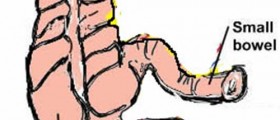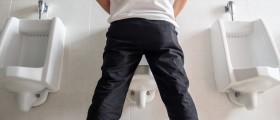
Pelvic pain can be caused by disorders that involve organs of the pelvic area, which are the bladder, uterus, rectum and pelvic floor muscle. Causes of pelvic pain include: irritable bowel syndrome, endometriosis, appendicitis, salpingitis, pelvic adhesions, and abdominal adhesions. Pelvic pain can extend downwards and involve lower extremities or upwards and involve chest area.
Pelvic Adhesive Disease (Adhesions)Adhesion is a group of internal scar tissue that attach to each other. These scars may originate from pelvic or abdominal surgery, endometriosis, appendicitis or pelvic inflammatory disease. Adhesions develop as a response to any tissue disturbance. Due to adhesions, organs can stick and bind to one another and cause pelvic pain. Adhesions can be treated surgically, commonly with laparoscopy. Possible complications of adhesions include small bowel obstruction, infertility and increased risk of ectopic pregnancy.
Bladder InfectionsBladder infection is the most common type of urinary tract infection. Bladder infection is also known as cystitis and it occurs when bacteria get into the bladder and cause inflammation and infection of the organ. Common symptoms of bladder infection are: urgent need to urinate, frequent urination, burning and pain during urination, bloody urine and abdominal pain. Bladder infection develops when rectal bacteria enter urethra and later reach and colonize the bladder. Women are more susceptible to the condition because of the shorter urethra and the closeness of the urethra to the vagina and anus. This infection can spread during sexual intercourse but it can be also triggered by a diet that makes the urine more acid. Treatment for bladder infection usually involves antibiotics.
EndometriosisEndometriosis is a condition where inner lining of the uterus, known as endometrium, grows outside the uterus. Endometrial cells outside the uterus respond to hormonal changes as those inside the uterus, thereby the symptoms are worsen during menstrual cycle. Endometriosis commonly affects the ovaries, fallopian tubes or tissue lining of the pelvis. In rare cases, it can involve tissue outside the pelvic cavity. Endometriosis can lead to development of scar tissue and adhesions. Symptoms of the condition include severe pelvic pain and cramping often associated with menstrual period, pain during or after intercourse, pain with bowel movements or urination, and excessive bleeding. Chronic pelvic pain associated with endometriosis is commonly followed by lower back pain and abdominal pain. Endometriosis can result in adhesions and infertility. Possible causes of endometriosis include: retrograde menstruation, vascular metastases and lymphatic spread. Endometriosis can be treated surgically, with pain relievers and hormonal therapy. In severe cases of endometriosis, hysterectomy may be performed.

















Your thoughts on this
Loading...